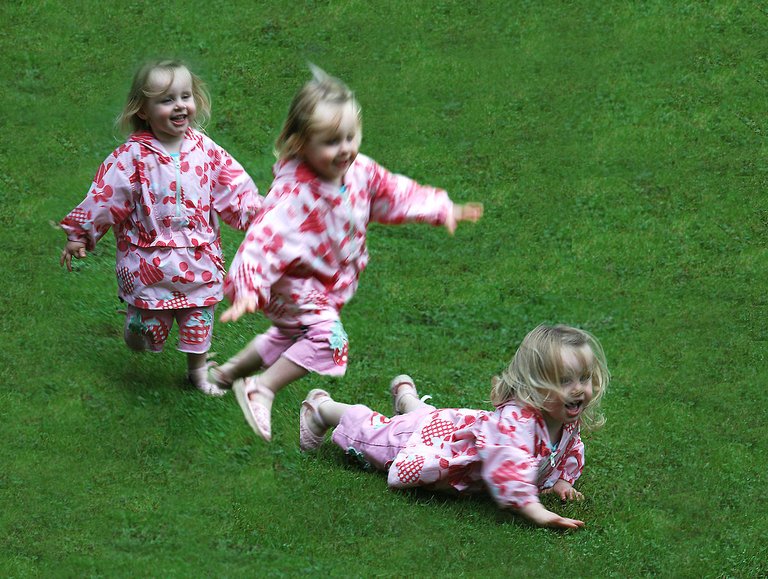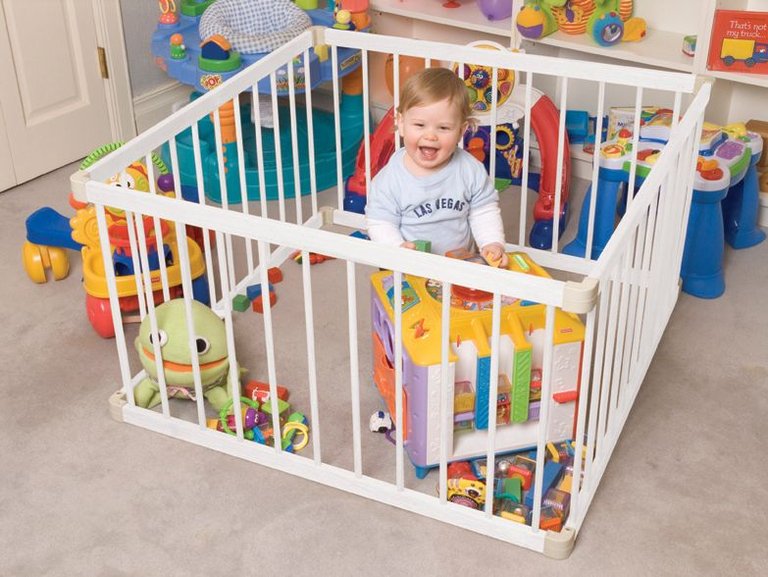That seems to be easier said than done. As parents, we can’t help but be overprotective and make sure no harm comes to our children. In some instances, though it is better to let them be.

First of all, a toddler’s body is its own cushion. Because of her size, she is closer to the ground, so the impact is minimal; also, she is well-protected with baby fat. The skull is also flexible because the fontanels (or the soft spot) hasn’t closed completely yet, so your child can usually take slight bumps on the head without much damage.

Overprotecting your toddler to prevent falls (i.e., keeping him cooped up in a playpen for hours) will only lead her to fall down often more, since it is only by falling that a child learns to master his own two feet. Also, coddling your baby will only make him more fearful later on in life, inhibit his gross motor development (like jumping and running) and stifle his natural drive to explore.

However, these don’t mean you shouldn’t keep a watchful eye on your toddler when he is playing. According to Web MD (www.webmd.com), if he experiences what looks like a real bang on the head, observe her closely for 24 hours; if he is asleep, wake her up every two or three hours throughout the night. Call pediatrician immediately if your toddler exhibits any of the following symptoms:
Loss of consciousness or appearing not to respond to speech or touch.
This is hard to evaluate when child is asleep. However, a little shake and a loud voice should arouse even a deep sleeper.
Bleeding or emitting clear fluid from the ears or nose.
Nonstop bleeding from scalp.
Even small head cuts can be quite bloody because blood vessels in the scalp are close to the surface. However, steady pressure with a piece of gauze should stop small cuts from bleeding within five to ten minutes.
Confusion
Check to see whether the child appears disoriented or is unable to recognize you.
Severe headache.
This is difficult to evaluate unless the child is capable of communicating verbally.
Convulsions or seizures.
Muscle weakness, difficulty walking or one-sided weakness in an arm or leg.
If the child appears to have injured his spine or neck, try if at all possible not to move her until medical help arrives.
Pupils of different sizes.
Vomiting.
So my advice to all the mothers out there is, If your toddler inhibits any of this, even if it has only one symptoms. Immediately go to the nearest hospital and see a pediatrician.
Image Source: Google.com
Thank you for reading my post! Till next time! Lablab <3



PHILIPPINES: 6th of April, 2018. Friday ParentingPost#7
Hi! I am a robot. I just upvoted you! I found similar content that readers might be interested in:
https://www.smartparenting.com.ph/parenting/baby/what-to-do-when-your-baby-falls-down-danger-signs-to-look-out-for